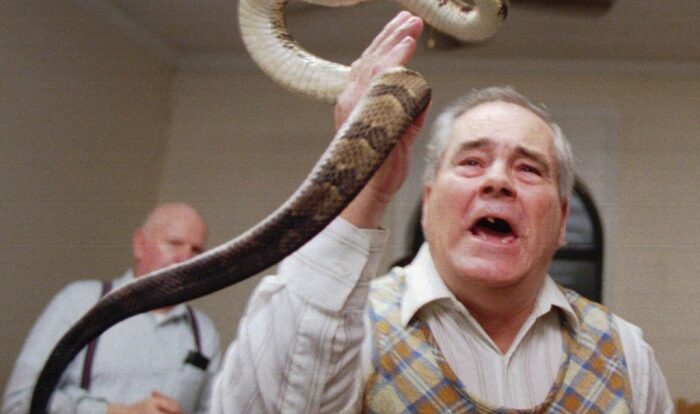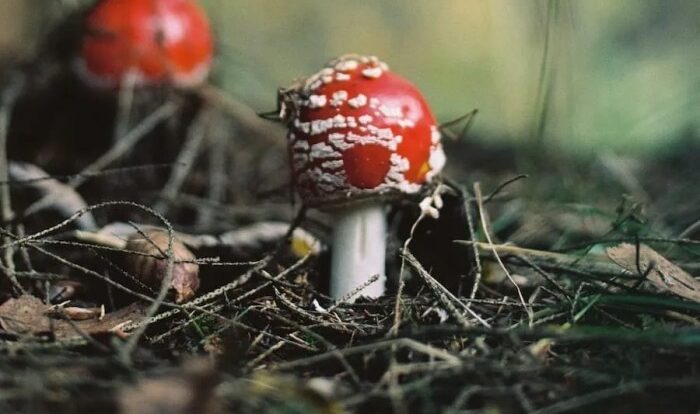
In the realm of pet ownership, few pairings are as intriguing as that of a snake and a cat. “How to Handle His Snake Yumi Sin and Fit Kitty” delves into the fascinating dynamics of this unlikely duo, offering a comprehensive guide to creating a harmonious and safe environment for both creatures.
Understanding the natural instincts and behaviors of snakes and cats is paramount. We’ll explore how their unique traits can influence their interactions and provide tips on creating a safe haven for both pets, encompassing proper housing, nutrition, and water.
Understanding Snake and Kitty Behavior: How To Handle His Snake Yumi Sin And Fit Kitty

Snakes and cats are two very different animals with very different natural instincts and behaviors. Snakes are predators that typically eat small rodents, while cats are predators that typically eat small birds and mammals. As a result, snakes and cats may see each other as potential prey or threats.When
a snake and a cat encounter each other, their behaviors will likely be influenced by a number of factors, including the size of the animals, the species of the snake, and the personality of the cat. In general, however, snakes will typically try to avoid cats, while cats will typically try to kill snakes.
Snake Behavior
Snakes are ambush predators that typically wait for their prey to come close before striking. They are not particularly agile, so they will typically try to avoid confrontations with larger animals. If a snake does feel threatened, it may try to bite its attacker.
Kitty Behavior
Cats are curious animals that are often fascinated by snakes. However, cats are also predators, and they may see snakes as potential prey. If a cat does attack a snake, it will typically try to kill it by biting it in the head.
Creating a Safe Environment

Ensuring a safe environment for both the snake and the kitty is crucial for their well-being and harmonious cohabitation. This involves providing adequate housing, proper nutrition, and access to clean water.
Proper Housing
- Snake enclosure:Choose a secure enclosure that is large enough for the snake to move around comfortably. It should have a secure lid and proper ventilation.
- Kitty’s territory:Designate a specific area in the house as the kitty’s territory, free from potential snake interactions.
- Separate feeding areas:Feed the snake and kitty in separate locations to avoid territorial disputes or food-related aggression.
Proper Nutrition
- Snake’s diet:Feed the snake according to its specific dietary needs. Consult with a veterinarian or experienced snake owner for appropriate prey size and frequency.
- Kitty’s diet:Provide the kitty with a balanced diet formulated for its age and activity level.
Access to Clean Water
- Water bowls:Place shallow water bowls in both the snake’s enclosure and the kitty’s territory. Change the water regularly to ensure freshness.
- Humidity:Maintain appropriate humidity levels in the snake’s enclosure using a humidifier or misting system.
Managing Interactions

Integrating a snake and a kitty requires careful management of their interactions. The key is to introduce them gradually and supervise their interactions closely.
Introducing the Snake and Kitty
- Start by placing the snake in a secure enclosure within the kitty’s environment. This allows the kitty to become familiar with the snake’s scent and presence.
- Gradually increase the duration and frequency of supervised interactions, keeping the snake in its enclosure initially.
- Once the kitty is comfortable with the snake’s presence, allow brief, controlled interactions outside the enclosure.
Supervised Interactions
- Always supervise interactions between the snake and kitty.
- Keep the interactions short and positive, providing treats or praise for both animals.
- If either animal shows signs of stress or aggression, separate them immediately.
Training and Enrichment
To ensure a harmonious coexistence, it’s crucial to train both the snake and the kitty to behave appropriately around each other. Additionally, providing enrichment activities is essential for their mental and physical well-being.
There’s no denying that snakes can be fascinating creatures, but they can also be dangerous if not handled properly. If you’re thinking about getting a snake as a pet, it’s important to do your research and learn how to handle it safely.
This article provides some helpful tips on how to handle your snake without getting bitten or injured. It also covers how to feed your snake and keep it healthy.
Training should focus on positive reinforcement, rewarding desired behaviors with treats or praise. For instance, the kitty can be rewarded for remaining calm and respectful of the snake’s space, while the snake can be rewarded for not reacting aggressively to the kitty’s presence.
Enrichment Activities
Enrichment activities are vital for both the snake and the kitty’s well-being. These activities stimulate their minds and bodies, preventing boredom and potential behavioral issues.
Knowing how to handle his snake yumi sin and fit kitty can be a challenge. However, if you follow the advice in this article ( how to handle his snake yumi sin and fit kitty ), you’ll be able to get the most out of your relationship with your snake and kitty.
You will also be able to avoid any potential problems that could arise from not knowing how to handle them properly.
- For the snake:Provide a variety of hiding places, climbing structures, and objects to explore, such as logs, branches, and artificial caves.
- For the kitty:Offer interactive toys, scratching posts, and catnip to stimulate play and provide mental enrichment.
Health and Safety Considerations
Keeping a snake and a kitty in the same household can pose potential health and safety risks that require careful consideration and proactive management.
One of the primary concerns is the risk of snake bites. Snakes, even non-venomous ones, can bite if they feel threatened or provoked. To prevent bites, it is essential to handle the snake with caution, respect its boundaries, and avoid sudden movements or loud noises.
Supervise interactions between the snake and the kitty closely, and separate them if any signs of aggression or discomfort arise.
When it comes to handling his snake Yumi Sin and fit kitty, he’s a pro. But when it comes to increasing insurance agent productivity, he’s all ears. Check out how to increase insurance agent productivity for some tips. Maybe he can apply some of those strategies to his snake-kitty handling routine.
Who knows, maybe Yumi Sin and the kitty will start working together to sell insurance policies.
Venomous Snakes, How to handle his snake yumi sin and fit kitty
If you keep a venomous snake, the risks are significantly higher. Venomous snake bites can be life-threatening and require immediate medical attention. It is crucial to have a clear understanding of the snake’s venom and its potential effects. Keep antivenom readily available and ensure that all household members are aware of the emergency procedures in case of a bite.
Hygiene and Sanitation
Both snakes and kitties can carry bacteria and parasites that can be transmitted to humans or other animals. Regular cleaning and disinfection of their enclosures, as well as frequent handwashing after handling them, are essential to prevent the spread of diseases.
Escape Prevention
Snakes are skilled escape artists. Ensure that their enclosure is secure and escape-proof. Regularly check for any potential escape routes and seal them off promptly. Supervise the snake closely when outside its enclosure, and never leave it unattended in an unsecured area.
Pet Insurance
Consider obtaining pet insurance to cover the costs of veterinary care in case of snake bites or other health emergencies. Pet insurance can provide peace of mind and financial protection against unexpected expenses.
Outcome Summary
Managing interactions between a snake and a cat requires careful planning. We’ll provide strategies for gradual introductions and supervised interactions, emphasizing the importance of training and enrichment activities to foster appropriate behavior and keep both animals mentally and physically stimulated.
Health and safety considerations are also crucial. We’ll discuss potential risks and provide tips on preventing and managing them, ensuring the well-being of both pets and creating a harmonious household where they can thrive.
Answers to Common Questions
Is it safe to keep a snake and a cat together?
With proper precautions and management, it can be possible to keep a snake and a cat in the same household. However, it’s essential to prioritize safety and ensure both pets have their own dedicated spaces and supervised interactions.
How do I introduce my snake to my cat?
Introductions should be gradual and supervised. Start by keeping the snake in its enclosure while allowing the cat to observe from a distance. Gradually reduce the distance and duration of interactions over time, monitoring their behavior closely.
What are the potential risks of having a snake and a cat together?
Potential risks include the snake biting the cat or the cat injuring the snake. Proper handling, supervision, and secure enclosures can help minimize these risks.


